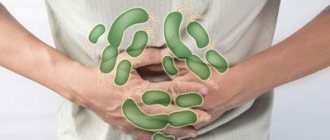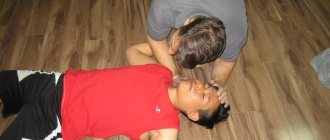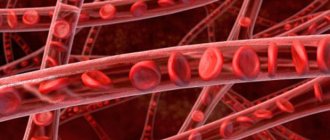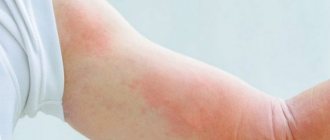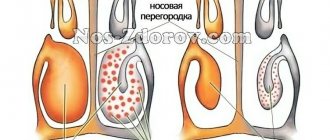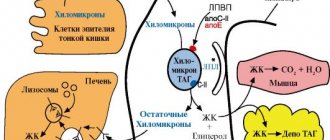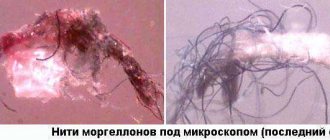Urticaria is a common dermatitis of an allergic nature. It appears as a result of contact with internal and external allergens in the form of itchy blisters of various shapes and sizes. Another name for the pathology is urticaria. The word urtica in Latin means nettle.
Both names are explained by the fact that urticaria has symptoms that make it similar to a nettle burn.
According to the ICD 10 classification, the disease is assigned code L50. Hives. It is often found in dermatological practice, as it accounts for 10-20% of all skin pathologies. It is also one of the most common manifestations of allergies.
The rash appears quickly and can be localized anywhere: from the head to the legs and back. Urticaria in adults and children is a rather dangerous disease, since in some cases angioedema appears. However, with proper treatment, in most cases the rash goes away within a few days.
The healing time largely depends on the speed of contacting a doctor, who will prescribe the necessary medication, and the elimination of the allergen. In some cases, dermatitis may become chronic.
What does the disease look like?
The appearance of urticaria rashes is due to the fact that swelling develops in the connective tissue due to inflammation. Locally, urticaria appears as small red elements rising above the skin. Gradually they turn pale. But hemorrhages may occur in inflamed areas.
Blisters can come in different sizes and shapes. Small elements sometimes merge into fairly large spots. Often, in the center of a large element, the inflammatory response subsides, causing a ring to form.
The rash is accompanied by itching and burning, which are especially characteristic of the acute type of dermatitis.
Hives
Urticaria is a polyetiological dermatosis, manifested by a monomorphic urticarial itchy rash, called urticaria. There are acute (including acute limited Quincke's edema), chronic recurrent, persistent papular chronic and solar urticaria.
Pathogenesis of urticaria. A common pathogenetic link for all clinical varieties of urticaria is increased permeability of microvasculature vessels and the acute development of edema around these vessels.
The development of a blistering reaction in urticaria is based on immediate-delayed hypersensitivity, caused by a high concentration of biologically active substances. In patients with urticaria, the content of histamine in the blood serum is increased, and the ability to inactivate histamine is sharply reduced: the histaminopexic properties of the blood serum of these patients are reduced to zero values, which leads to increased vascular permeability. Other chemically and physiologically active substances (serotonin, acetylcholine, bradykinin, interleukins, prostaglandins) that potentiate the effect of histamine are also involved in the implementation of immediate-delayed hypersensitivity in patients with urticaria. Thus, urticaria is a toxic-allergic dermatosis with a polyetiological genesis. Non-allergic forms of chronic urticaria are known, resulting from dysproteinemia with excessive accumulation of intracellular proteinases. In these cases, processes of an autoaggressive nature develop due to the pathological state of the immune system, when, during the reaction of pathological antibodies and antigens, aggressive circulating immune complexes are formed, causing a vascular reaction similar to the reaction to histamine. Since in patients with urticaria the content of serum immunoglobulins is altered with hyperproduction of IgE and insufficiency of IgA, the development of urticaria is not always associated with increased release of histamine. Forms of the disease that occur when exposed to bradykinin, serotonin and other peptides cannot be treated with antihistamines. This group also includes cold urticaria, caused by excessive release of cryoglobulins during cooling. An example of the influence of autonomic dystonia on the formation of urticarial efflorescence is cholinergic urticaria. In these cases, the production of acetylcholine is increased, which causes a vascular reaction similar to the reaction to histamine. Factors of pathogenetic significance are also concomitant diseases (chronic focal infection, helminthic infestations, familial atopy, biliary dyskinesia, gastrointestinal disorders, drug allergies).
Symptoms of urticaria. Acute urticaria occurs violently, suddenly in the form of profuse urticarial rashes located on the torso, upper and lower extremities. The blisters are a dense, elevated formation with acute swelling of the papillary dermis, deep pink in color with a pearlescent tint, and are accompanied by severe itching. With an abundant amount of elements, the blisters merge into extensive foci with uneven polycyclic edges. In this case, low-grade fever with chills (nettle fever), gastrointestinal disorders, biliary dyskinesia, and neurotic conditions may be observed. Elements of the rash can occur on the mucous membranes of the oral cavity, where they are accompanied by swelling, making breathing and swallowing difficult. The general course of acute urticaria lasts several days.
Acute limited angioedema
(syn.: giant urticaria, angioedema) is characterized by the sudden development of limited swelling of the skin (mucous membrane) and subcutaneous fatty tissue of the face (lips, cheeks, eyelids, etc.) or genitals. The skin becomes densely elastic to the touch, white, less often pink. Subjective sensations are usually absent; burning and itching are less common. After a few hours or 1-2 days, the swelling subsides, but a relapse is possible in the future. Quincke's edema is sometimes combined with ordinary urticaria. When swelling is localized in the orbital area, deviations of the eyeball in the medial direction and decreased visual acuity may be observed. Swelling is especially dangerous in the area of the larynx or pharynx, as it can lead to stenosis and asphyxia.
Differential diagnosis is carried out with lymphostasis, recurrent erysipelas, Melkerson-Rosenthal syndrome, from which Quincke's edema differs by an acute onset, short-term existence and permanent resolution. In terms of clinical picture, pathogenesis, and course, childhood urticaria is similar to childhood prurigo (strophulus).
Chronic recurrent urticaria
It is characterized by less profuse rashes, less swollen blisters, appearing in waves over several years. Periods of relapses alternate with remissions of varying durations. During urticarial rashes, headache, weakness, low-grade body temperature, gastric discomfort, arthralgia, and neurotic phenomena are possible. Eosinophilia and thrombocytopenia are observed in the blood.
Persistent papular chronic urticaria
usually transforms from chronic recurrent due to the addition of polymorphic cellular infiltration in the dermis, consisting mainly of lymphocytes, to interstitial edema. The nodular elements are distinguished by congestive-erythematous coloration, dense or densely elastic consistency, and are located mainly on the extensor surfaces of the extremities. The disease is observed more often in women. According to many authors, persistent papular urticaria should be considered a type of prurigo.
Solar urticaria
- a type of photodermatosis that develops in individuals suffering from liver diseases with impaired iorphyrin metabolism and severe sensitization to UV rays. Women get sick more often. The disease manifests itself as rashes of urticarial elements on open areas of the skin (face, neck, chest, upper limbs, etc.). The course of dermatosis is characterized by seasonality (spring, summer). With multiple rashes, manifestations of a general reaction of the body in the form of itching, breathing problems, and cardiac activity are possible.
Diagnosis of urticaria. Diagnosis is based on the presence of a characteristic primary morphological element - a blister. The diagnosis is confirmed by bright urticarial red dermographism. Differential diagnosis is carried out by drug toxicoderma. Drug or nutritional toxicoderma is associated with the intake of medicinal substances or related foods. They are distinguished by the polymorphism of the rash elements with a predominance of vesicular, erythematous-squamous and bullous elements. Quincke's edema in the lip area should be distinguished from macrocheilia in Melkerson-Rosenthal syndrome, which is characterized by a combination of a folded tongue with facial paralysis. Swelling of the lip persists and is usually not as pronounced as with Quincke's edema. Erysipelas of the lip differs from Quincke's edema in the presence of hyperemia, which has clear, sharp boundaries in the form of flames in combination with elevated body temperature, malaise, and chills. Differential diagnosis with strophulus is based on the presence in chronic urticaria of only urticarial elements located randomly, without affecting the favorite places of localization of strophulus. It is more difficult to differentiate urticaria from insect bites (mosquitoes, fleas, bedbugs, etc.), because typical urticarial rashes often appear at the sites of bites. It is very important to take into account the seasonality of the appearance of the rash, its location, and the sanitary condition of the family or child care facility. With Dühring's dermatosis herpetiformis, in addition to blisters, blisters and blisters with eosinophilia, as well as hypersensitivity to iodine preparations, are detected.
Treatment of chronic urticaria is a “search” tactic, since the success of treatment largely depends on identifying all mechanisms, as well as somatic diseases, the manifestation of which may be urticaria. When an etiopathogenetic diagnosis is established, the underlying disease is treated. An in-depth examination is carried out against the background of basic therapy aimed at reducing the symptoms of urticaria. Modern antihistamines are considered as the basic treatment for chronic urticaria.
Physiotherapeutic procedures are also indicated: baths with decoctions of medicinal herbs, subaqueous baths, ultrasound, UV irradiation, PUVA therapy (except for solar urticaria), sanitary spa treatment.
Treatment of urticaria pigmentosa.
Urticaria pigmentosa rarely requires treatment. Surgical treatment for cosmetic purposes is possible. Antihistamines and glucocorticoids are also used.
Urticaria pigmentosa is a benign reticulosis accompanied by the accumulation of mast cells in the skin containing histamine, released through mechanical action (eg friction) and leading to the formation of blisters. There is a juvenile form of the disease, which occurs in childhood and goes away during puberty, and a rather rare adult form, which usually persists throughout life.
Antihistamines and urticaria
Treatment of urticaria largely depends on the form of the disease and causative factors. However, the basic principles of therapy are the same; they include the following steps: eliminating or limiting exposure to factors that cause urticaria; conducting pharmacotherapy; detailed examination of patients, treatment of diseases that may cause urticaria.
Drug therapy (pharmacotherapy) is one of the main methods of treating urticaria, antihistamines occupy a special place among them. Treatment of patients with chronic urticaria requires great patience and close cooperation between the doctor and the patient. The quality of life of patients is seriously affected: itching can affect daily activity, disrupt sleep, rashes on the face embarrass the patient, severely limit his communication and professional activities. Patients require frequent and long-term use of antihistamines. First generation antihistamines have a number of undesirable effects that limit their use. The sedative effect and impairment of cognitive and psychomotor functions of the central nervous system are well known.
Classification of urticaria
Urticaria is systematized according to various characteristics.
Based on the type of flow, there are 2 varieties.
- Acute form - occurs as an immediate reaction to an irritant. An urticarial rash and swelling appear, the rashes are accompanied by itching. In some cases, it is accompanied by a deterioration in the general condition: fever, chills, nausea. Often a person begins to have a headache and dizziness. The illness usually lasts a few hours, but not more than 6 weeks.
- Chronic - when symptoms persist for more than 14 days. The rashes occupy less volume. Inflammatory elements persist for about a day, but instead of some, others constantly appear. The swelling is not as pronounced. The emotional state of the patient is less stable, constant itching leads to injury to the skin and the appearance of wounds and ulcers. Remissions are replaced by exacerbations. It can develop into a papular form, when urticarial elements are replaced by papules. Chronic urticaria occurs more often in adults.
Depending on the cause, urticaria can be classified in two ways. In accordance with the first taxonomy, urticaria is of two types according to etiology:
- the body’s independent reaction to any impact, for example, contact with an animal, taking antibiotics;
- manifestation of the disease (gestosis during pregnancy, pathologies of various parts of the gastrointestinal tract, helminthiasis, immunodeficiency, neurohumoral regulation disorders, chronic foci of infection).
A symptom of any disease is mainly a chronic type of urticaria. An independent reaction can be both acute and chronic types of urticaria.
The second classification of urticaria, based on the etiology of the rash, is more detailed. Let's look at the features and symptoms of each type of urticaria.
Causes of urticaria
There are many of them and it is quite difficult to determine what exactly in this case was the impetus for the occurrence of urticaria.
- Allergy to medications.
- Reaction to food.
- Consequences of insect bites.
- Manifestation of infection (sore throat, caries).
- Consequence of ultraviolet burn.
- Reaction to tight clothing.
- Disorders of internal organs (gastrointestinal tract, kidneys, liver)
- Exposure to heat or cold.
- Malignant tumor.
- Worms.
- Gynecological diseases.
- Hormonal imbalance (during pregnancy, menstruation).
- Consequence of stress.
Symptoms of acute urticaria rash
- Rash on the body. It appears as small blisters of pale pink color. It quickly appears on the skin, but with proper treatment it also disappears quickly. It may appear in one area and soon move to another.
- Severe itching.
Symptoms of chronic urticaria
- Rash and itching, as in the acute form of manifestation.
- Headache.
- Fever.
- General weakness.
Clinical picture of various types
There can be many reasons that cause the development of utricarial rashes. The main ones give the name to varieties of dermatitis. Some types are assigned a separate code by the international classification of the disease.
| Type of urticaria | ICD 10 code | Causes | Features and Signs |
| Allergic | L50.0 |
|
|
| Contact | L 50.6 |
|
|
| Dermatographic (Mechanical) | L 50.3 |
|
|
| Vibrating | L 50.4 |
|
|
| Cold | L 50.2 |
|
|
| Thermal | L 50.2 |
|
|
| Slowed by vertical pressure |
|
| |
| Solar |
|
| |
| Aquagenic |
|
| |
| Cholinergic | L 50.5 |
|
|
| Adrenergic |
|
| |
| Pigmented (mastocytosis) | Q82.2 |
|
|
| Idiopathic | L 50.1 |
|
|
In general, symptoms disappear quickly when contact with irritants is stopped. Therefore, people do not consult a doctor for a long time. The etiology of all possible forms of the disease indicates that urticaria is not contagious in any of the cases. Infections can only serve as a trigger. That is, you can contact the patient.
But sometimes it is impossible to recover without medical help.
Clinical manifestations
The skin reacts very quickly to an allergen entering the body. Bright pink blisters appear within just one hour. If urticaria occurs in an acute form, after three to five hours the skin is completely cleared of rashes.
Urticaria often occurs against the background of:
- liver pathologies;
- diseases of the digestive system;
- infectious diseases;
- helminthic infestation.
Urticaria with Quincke's edema, in addition to dermatological ones, is accompanied by other symptoms. Along with a rash on the skin, there is an increase in body temperature to 38 degrees, headaches, sleep disturbances, and a feeling of powerlessness.
In its chronic form, urticaria can last for many months with periodic exacerbations. In addition to the visible manifestations of urticaria, nausea and vomiting and increased nervousness are periodically disturbing.
If swelling occurs:
- in the throat area - the victim’s voice becomes hoarse, breathing becomes wheezing, speech is impaired;
- in the pleura - there is a sharp pain in the chest area, severe shortness of breath;
- in the brain - one of the most dangerous variations, leading to circulatory problems and seizures;
- in the digestive system - severe abdominal pain, nausea and subsequent vomiting;
- in the bladder area - its functionality is impaired, the process of urination is extremely painful.
Complications of urticaria
A complex case of urticaria is Quincke's edema. Its other name is angioedema or giant urticaria. Swelling can affect the skin, mucous membrane, and subcutaneous fat layer. The most typical places of occurrence:
- face (lips, oral mucosa, eyelids);
- neck;
- breast;
- genitals.
Dangerous is the formation of strong and deep swelling in the neck, which causes compression of the larynx and difficulty breathing.
Any swelling goes away within 1-2 days, but requires hospitalization. The main thing that those around you can and should do in this case is to call an ambulance.
Allergoses, urticaria and angioedema
Allergy
- This is an immune reaction of the body, accompanied by damage to its own tissues. Among allergic diseases, urticaria and Quincke's edema are among the most common.
Classification of urticaria and Quincke's edema
I. Allergic form
.
1).Non-infectious: food, medicinal, chemical, household, epidermal, pollen (hay fever).
2).Infectious (infection-dependent): bacterial, fungal, viral, parasitic.
3).Autoallergic (autoimmune).
II. Pseudo-allergic form
.
1. Non-infectious (food, medicinal, chemical, etc.).
2. Infectious (bacterial, fungal, viral, parasitic).
3. Physical: cold, thermal, mechanical, radiation, aquagenic.
4. Cholinergic.
5. Endogenous: metabolic, immunodeficiency, dishormonal (premenstrual, etc.), psychogenic.
The development of pseudoallergic urticaria is often associated with autonomic dystonia of the cholinergic type, against the background of which, along with acetylcholine, there is an increased liberation of histamine, provoked by a number of nonspecific irritants.
Flow:
- acute (up to 3-4 days),
- subacute progressive (up to 5-6 weeks),
- chronic, recurrent (more than 3 months).
Severity: light, medium, heavy.
Localization: focal, generalized.
Hives
– a disease characterized by a rash of itchy blisters on the skin. The blister is a swelling of the papillary layer of the skin.
Pathogenesis.
The pathogenesis of allergic urticaria includes sensitization to the allergen and a secondary hyperergic reaction when it re-enters the body. The reactions occur as atopic, in which reagin antibodies of the Ig E class are involved.
In addition, there are type III immune complex reactions, which are characterized by damage to the capillary network. Among the mediators secreted by leukocytes, histamine plays an important role. Histamine can induce blister and swelling of the skin.
This occurs due to dilation of venules and capillaries, increased vascular permeability and plasma exudation. The blister in the center is pale due to compression of the vessels by the edematous fluid, and along the edge there is a rim of hyperemia, developing due to the dilation of the arterioles.
At the same time, skin itching occurs, which is caused by irritation of the skin nerves by mediators of the allergic reaction. Both immediate and delayed reactions are involved in the pathogenesis of chronic urticaria.
How to get rid of the disease?
It is impossible to cure urticaria forever. Treatment boils down to eliminating the signs of urticaria and eliminating the irritant if possible. Diagnosis and therapy are carried out jointly by an allergist and an immunologist. In some cases, consultation with other specialists, for example, a gastroenterologist, infectious disease specialist, or endocrinologist, will be required.
The diagnosis is made quickly enough during a physical examination; an additional general blood test is prescribed, the results of which indicate an increase in the concentration of leukocytes, and especially eosinophils.
In order to understand how to deal with hives, or rather to avoid its recurrence, allergy tests can be prescribed in each specific case. They are carried out in the period after the onset of remission and cessation of drug therapy.
| Type of treatment | Methods |
| Non-drug |
|
| Medication |
|
If necessary, sedatives are prescribed and concomitant diseases of the hormonal and digestive systems are treated. It is also important to sanitize foci of infection. Although urticaria itself is far from contagious, some infectious diseases can trigger it and aggravate it.
In most cases, treatment of various forms of urticaria in adults is carried out on an outpatient basis, following the doctor’s recommendations. Any therapy must be discussed with a doctor.
But sometimes it is necessary to provide medical care in a hospital setting.
Treatment of urticaria
If you suspect a disease, you must contact a highly qualified allergist-immunologist . He will prescribe the necessary tests to diagnose the rash and offer adequate treatment . It is very important to identify the main causes that led to the occurrence of the disease.
When diagnosing the disease, histological studies are carried out, and a biopsy is taken of the areas of the skin where urticaria appears. In severe forms of the disease, urine and blood tests are performed, and an immunological examination of the body is performed.
If the cause of hives is an allergy, then you should protect yourself from the allergen substance . In this case, the doctor prescribes a special diet in which you will have to temporarily give up chocolate, smoked meats, citrus fruits, honey and other highly allergenic foods.
At the first suspicion of acute urticarial rash, the doctor prescribes the use of antihistamines (suprastin, diazolin, loratodine, etc.). If urticaria has a severe form of manifestation, then you will have to add glucocorticosteroids (prednisolone), absorbent agents (activated carbon, pilifepan, enterosgel), and infusion therapy to antihistamines. Often in difficult cases, gastric lavage is done. In severe forms of urticarial rash, procedures to cleanse the blood and blood vessels .
With chronic urticaria, it is very important to avoid relapse of the disease; it is necessary to take preventive measures to ensure that the rash does not reappear. It is impossible to get rid of the disease, but eliminating unpleasant symptoms is quite possible.
Traditional medicine offers its own remedies for the treatment of urticaria. The most important thing is not to carry out the treatment yourself. Any alternative medicine recipes you want to try should first be discussed with your doctor.
Most often, to get rid of urticarial rash in folk medicine, herbs that have anti-inflammatory and immunorestorative properties are used. These plants must be hypoallergenic.
Indications for hospitalization
There are several cases when urticaria in adults requires hospital treatment:
- angioedema (especially with suffocation);
- urticaria accompanying an anaphylactic reaction;
- severe forms of acute urticaria;
- complex course of chronic urticaria that cannot be treated on an outpatient basis.
Doing something on your own in these cases is unacceptable and dangerous.
After the exacerbation is relieved, several rules must be followed to prevent the return of unpleasant symptoms.
Angioedema
Angioedema is an acute, severe condition, the clinical picture of which is manifested in the rapid development of swelling on the face.
Most often, antineurotic edema is a skin reaction of the body to contact with an allergen (insect poison, food or drug provocateurs).
Once in the body, the allergen triggers the release of serotonin and histamine into the blood. These substances sharply increase vascular permeability, as a result of which the liquid part of the blood leaks from the lumen of the vessels, forming angioedema.
Quincke's edema
Angioedema of the neck and head is diagnosed as Quincke's edema. The clinical picture of swelling is accompanied by a sharp swelling of tissues and mucous membranes; when affecting the vocal cords and mucous membranes of the larynx, it can cause a severe, life-threatening complication of Quincke's edema - anaphylactic shock.
Quincke's edema with urticaria develops in every third case (according to the medical call card). This is recurrent swelling, most often affecting the lips and tongue.
We recommend further reading Diet and proper nutrition for Quincke's edema
It is very difficult to establish the exact cause of the development of pathology. The allergic type of Quincke's edema is an instant reaction of the body to contact with an allergen.
The hereditary type of Quincke's edema is a congenital pathology, provoked by an excess (or deficiency) of C-1 inhiborg. Factors that activate the process of exacerbation of pathology: a sharp change in temperature, a prolonged state of stress, trauma.
There are also a number of indirect factors contributing to the development of angioedema:
- diseases of the endocrine system;
- diseases of internal organs;
- helminthic infestation.
Acute urticaria
The body's reaction to contact with an allergen is diagnosed as allergic acute urticaria. With a timely response, the pathology responds well to treatment. Otherwise, the acute form of urticaria develops into a chronic form, requiring treatment of the patient in a hospital.
Typical symptoms of Quincke's edema in urticaria are blisters that suddenly appear and disappear in different parts of the body and cause unpleasant sensations of itching and burning.
Most often, rashes occur due to:
- consumption of foods that are allergens;
- with prolonged emotional stress, nervous breakdowns, depression (activates the blood clotting factor);
- contact with plant pollen, dust;
- when taking penicillin antibiotics.
Sometimes urticaria can be caused by a blood transfusion, vaccine or serum.
Chronic urticaria
A distinctive feature between Quincke's edema (anaphylactic shock) and chronic urticaria is the duration of the body's reaction. The clinical picture of chronic urticaria lasts no more than six weeks. The pathology is diagnosed by medical history and characteristic symptoms: swelling appears, blisters form. Chronic urticaria often develops against the background of chronic sources of infection: diseases of the digestive system, helminthiasis.
What to do if a chronic form of angioedema is detected is determined only by a doctor based on the results of the study and laboratory tests.
Prevention is the best therapeutic agent!
No matter how long the manifestations of urticaria last, few people want to encounter it again, since urticaria has symptoms that bring severe discomfort, especially itching. For this reason, the patient must do everything to prevent exacerbation:
- follow a diet;
- wash with hypoallergenic hygiene products;
- exclude, if possible, any contact with other irritants;
- follow the rules for prolonging remission for diseases that trigger urticaria.
How to treat it?
Pharmacological treatment
Depending on the duration of the disease and its severity, the doctor prescribes:
antihistamines;
- laxatives;
- diuretics;
- enterosorbent drugs - activated carbon, polysorb, etc.
Today, second-generation drugs are used as antihistamines - Claritin, Cetrin, Zyrtec, Zodak, Erius. They do not contain sedative components and do not cause drowsiness.
If this treatment does not help, glucocorticoid drugs or hormonal ointments are prescribed.
Elimination of the etiological factor of the disease after urticaria:
- the patient is prescribed to drink plenty of fluids;
- provoking external influences are excluded - cold, heat, vibration, stressful situations;
- in case of drug allergies, the prescription of medications is reduced as much as possible;
- a hypoallergenic diet is prescribed.
Folk remedies
Using Herbs
- dill or clover juice is applied externally;
- baths with water infusion of wild rosemary;
- nettle infusion - a tablespoon inside before meals.
Enema for urticaria
A tablespoon of apple cider vinegar or lemon juice is dissolved in a liter of water. In the first week, the enema is done every day, then every other day. External manifestations of the disease disappear within a week, but enemas must be administered within a month.
What to do if Quincke's edema is detected?
Urticaria is not dangerous to human life. Quincke's edema is a disease that requires emergency care. Do not panic and be clear and thoughtful in all decisions. The timeliness of the treatment provided depends on the clarity of your mind and awareness of your actions. Before an ambulance visits you, follow these simple guidelines.
- If the sick person is your relative or friend, then sit him in a comfortable position, calming him down before doing this.
- Any contact with the possible irritant should be stopped. If the swelling is caused by a bee sting, remove the sting immediately. If you can’t do this yourself, then wait for the specialist to arrive, keeping calm.
- Take an antihistamine (Diazolin, Diphenhydramine are suitable). Antihistamine injections are the most effective. The drugs weaken the allergic reaction and alleviate the general condition of the affected person.
- Prepare a special alkaline drink, which should contain a gram of soda per liter of water. Thanks to plenty of drinking, the allergen will begin to be gradually eliminated from the body.
- Use a sorbent (activated carbon and any other active drug in this spectrum will do).
- To reduce swelling and itching, you can apply any cold object or ice.
- The affected person's body must have access to fresh air.
At the first symptoms of angioedema, you should take antihistamines such as Diazolin
Severe swelling should only be investigated by a doctor. Sometimes independent actions only cause complications. As soon as emergency assistance arrives at the patient, specialists will perform the following actions:
- The first thing doctors will focus their energy on is to stop contact with the irritant by any means, a heating pad or additional injections may be needed.
- Further, the use of hormonal therapy is allowed, which will eliminate swelling and normalize respiratory function.
- The next stage will be the impact of desensitizing therapy, which will reduce the sensitivity of the human body and protect against repeated exposure to allergens.
Symptomatic therapy includes the use of saline and colloid solutions that lower blood pressure and normalize blood circulation.
Saline solutions with starch, polyglucin, vasopressor amino acids, atropine, agonists and other drugs can be used. And anti-shock drugs can also be used. Epinephrine and injections are considered the best among them.
Read also
Allergic rhinitis
What is allergic rhinitis? Allergic rhinitis is caused by an immune response to certain allergens.
Pollen is the most common allergen in seasonal illness. Causes of allergic... Read more
Allergy to the sun
What is Sun Allergy Sun allergy is a reaction that causes a red, itchy rash due to exposure to sunlight. One of the common types of rash is polymorphic photodermatosis,…
More details
Food allergies
What is the difference between food allergy and food intolerance? Food allergy is the response of the immune system to the intake of a particular food that causes an allergic reaction. Even a small amount of associated...
More details
Allergy to cosmetics
What are the dangers of cosmetics Adverse reactions to cosmetics are quite common, given their widespread use. The true prevalence of cosmetic allergies is unknown because people who experience...
More details
Allergic dermatitis
What is allergic contact dermatitis? Anyone has ever experienced skin symptoms after using various skin care products, shower gel or shampoo. Such…
More details

